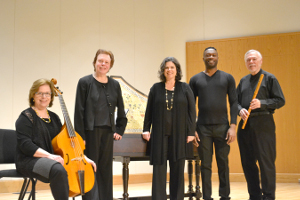With academic scandals and problems with athletics, the University of North Carolina at Chapel Hill has had a rocky time over the past year. If UNC-CH and its new Chancellor want something positive to show the institution in a better light, they need look no farther than the Music Department’s Symphony Orchestra, which played its equivalent of a semester-ending final exam in Memorial Hall with excellent readings of Johannes Brahms’ third symphony and the ninth symphony of Dmitri Shostakovich, under the baton of Music Director and Conductor Tonu Kalam.
Taking on large-scale symphonic works from the standard repertoire can be a daunting task for a student orchestra because it is so easy, in our era of easily-found recordings on disc and online, to compare the student ensemble’s performances to those of professional orchestras. Such comparisons are not necessary, however. Even though professional and student ensembles alike exist to make music, a university orchestra also exists as a teaching lab for young musicians.
Under Kalam’s crystal-clear conducting (another difference, as many professional conductors wax rhapsodic with frequently-played works such as the Brahms symphonies, often letting beat patterns fall by the wayside), the UNC Symphony passed their final exam with an “A.” Were there problems here and there? Of course. In the Brahms, there were pizzicato sections in the opening movement which produced some dull thuds for lack of vibrato by some in the bass and ‘cello sections; there were some unintentional portamento sounds from the ‘cellos in the main theme of the third movement, and some lost motion in that movement’s “B” section where Brahms’ writing is most disjunct. Those things did not diminish the fact that this was a solid performance, with moments of real beauty, such as the dialogues between strings and woodwinds in the “Andante” second movement, and moments of Brahmsian power. Indeed, as they reached the second theme of the Third Symphony’s concluding “Allegro,” the students sounded like pros.
Shostakovich’s Symphony No. 9 in E-flat, Op. 70, showed that Kalam’s students had learned to negotiate not only the lyricism of Brahms, but also the quirky rhythms and irony-filled writing which permeates this end-of-WWII “victory” symphony. With sparser textures than Brahms, Shostakovich’s writing provided opportunities for numerous solo lines. Amidst the stumbling marches and the recitative-like passages which seemed to recall the words of British poet Wilfred Owens’ “My subject is war, and the pity of war,” the solo contributions of Concertmaster Christin Danchi, clarinetist James Moon, and bassoonist Erin Lunsford deserve special mention.
While the balcony of Memorial Hall was comfortably full, it was disappointing to see so many empty seats on the main floor. This orchestra, like some of the smaller UNC-CH ensembles, is a credit to the University as a whole, not just to the Music Department. Would that it would draw as many fans as the school’s Atlantic Coast Conference athletic teams; its performance is certainly as outstanding as its Athletic Department cousins’.











